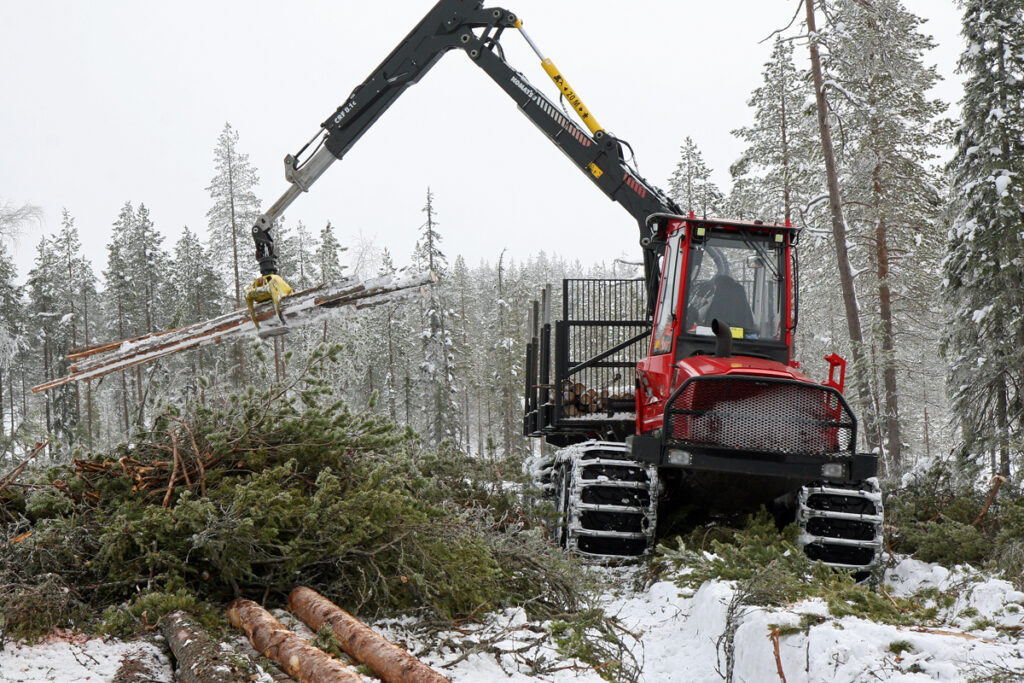Co-operation to make forest education more attractive – new experts for the field

In the future, more educated forest experts will be needed in Finland. The recently established Forest Education Association will bring forest actors together to develop the forest sector education and to attract young people to it.
A great number of Finnish forest organisations and educational institutions are involved in the Forest Education Association, which started its work at the beginning of 2017.
“All levels of education are represented. What is also very positive is that working life is involved, too. This means that the requirements of working life will be communicated to education providers,” says Mr. Ville Manner, Executive Manager of the Forest Education Association.
Manner points out that the best results will always be achieved with broad cooperation. In general terms, the association has two aims: to improve the quality of forest education and to attract students to it.
Starting the new association is perfectly timed, for the growth of bioeconomy makes the forest sector in Finland attractive again. For example, the value of forest products exports is approaching the record results seen at the turn of the century. Because of substantial investments in new industrial facilities, the demand for wood is expected to increase by 15 million cubic metres per year. New, skilled forestry workers will be needed to harvest all that.


Shared e-learning for all
The enthusiasm for bioeconomy and the positive financial figures are not, however, reflected in forest education. Actors are particularly concerned about vocational education, which is being reformed drastically.
For vocational schools, the reform means not only new content, but also austerity measures. Despite the forest sector’s importance for the national economy, the number of students is not high – and forest education programmes are among the costliest.
According to Ms. Susanna Tauriainen, Chair of the Forest Education Association, the recipe is to do more with less. The new association is needed to bring educational institutions of all levels together at the same table.
“The main task of the Forest Education Association is to remove overlaps and to create joint projects to improve the education,” says Tauriainen, whose main job is as the principal organisational training specialist at the Central Union of Agricultural Producers and Forest Owners (MTK).
The future projects of the association are related to, for example, new teaching materials and e-learning environments. The association ensures that web materials are created in co-operation for all educational institutions – instead of separately at each one.
Education and training is needed throughout the country
Over two dozen schools in Finland provide vocational education in forestry; that is, for forestry machine operators and forestry workers. Forestry engineering can be studied in many universities of applied sciences. The University of Helsinki and the University of Eastern Finland in Joensuu have Departments of Forest Sciences.
According to Tauriainen and Manner, it is important that forest education is provided throughout Finland.
“On the vocational level especially, it is important that 16-year-olds are able to study close to their homes. After receiving their qualifications they will also be able to find jobs in every corner of the country,” Manner says.
Accessible education is also more attractive. In addition, the students should be able to tailor their curriculum to follow an individual learning pathway.
The forest sector offers plenty of options for learning. In addition to traditional forest occupations, new business opportunities in bioeconomy are increasing. “Process industry and sawmills, for example, also interface closely with us,” says Tauriainen.
Mr. Arttu Huhtanen, student member in the Forest Education Association’s executive committee, emphasizes that education should never skimp on quality. Although budgets will be cut back, educational institutions should be able to challenge its students to strive for the best results.
“The forest sector has a good education system, covering the whole field from working life to research,” says Huhtanen, a student at the Tampere University of Applied Sciences and Chair of the national Forestry Students’ Association (MEOL).
Diversity of northern forests forms the basis
Because a broad range of employers are involved in the Forest Education Association, it is believed to be able to improve the meshing together of education and working life in particular.

Co-operation with working life ranked as one of the best ways of improving forest sector expertise in an inquiry by the Metsämiesten Säätiö Foundation, a strong supporter of forest education and the new Association.
The nature of forest management in the North also affects the content of education, Manner points out. Parallel to harvesting and logistics, ecosystem management and the sustainable use of forests are also taught.
“Our strength lies in reconciling the economic, social and ecological aspects”, Manner states.
Forest Education Association (in Finnish)

Kirjoita kommentti